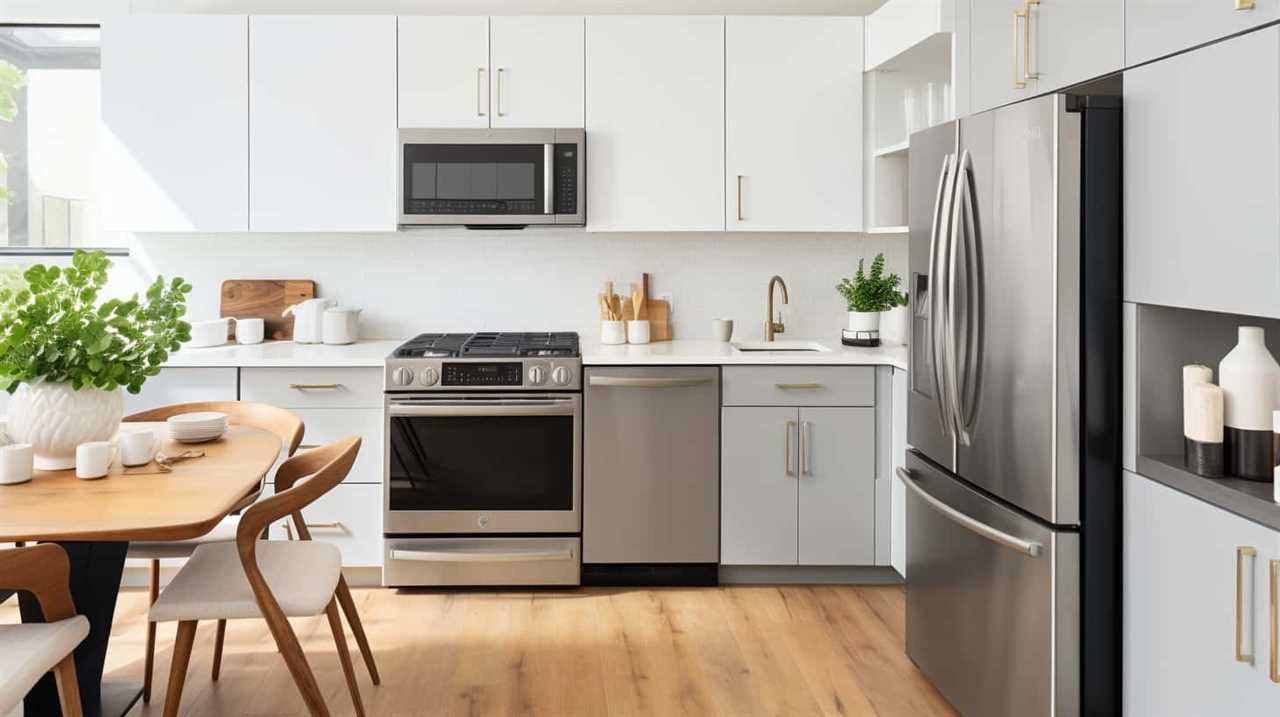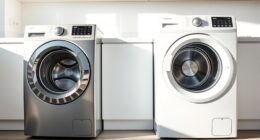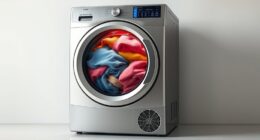In today’s energy-conscious world, it is essential to comprehend the electricity consumption of our household appliances.
Many of us have wondered, ‘When appliances are plugged in, do they use electricity?’ This inquiry stems from concerns about standby power, also known as vampire power, which refers to the energy consumed by appliances even when they are not in use.
By delving into the truth about appliance energy consumption, we can gain valuable insights into how our everyday devices contribute to our overall electricity usage.
Furthermore, we will explore the factors that determine the extent of this consumption and identify common household appliances that are particularly notorious for their energy usage when left plugged in.
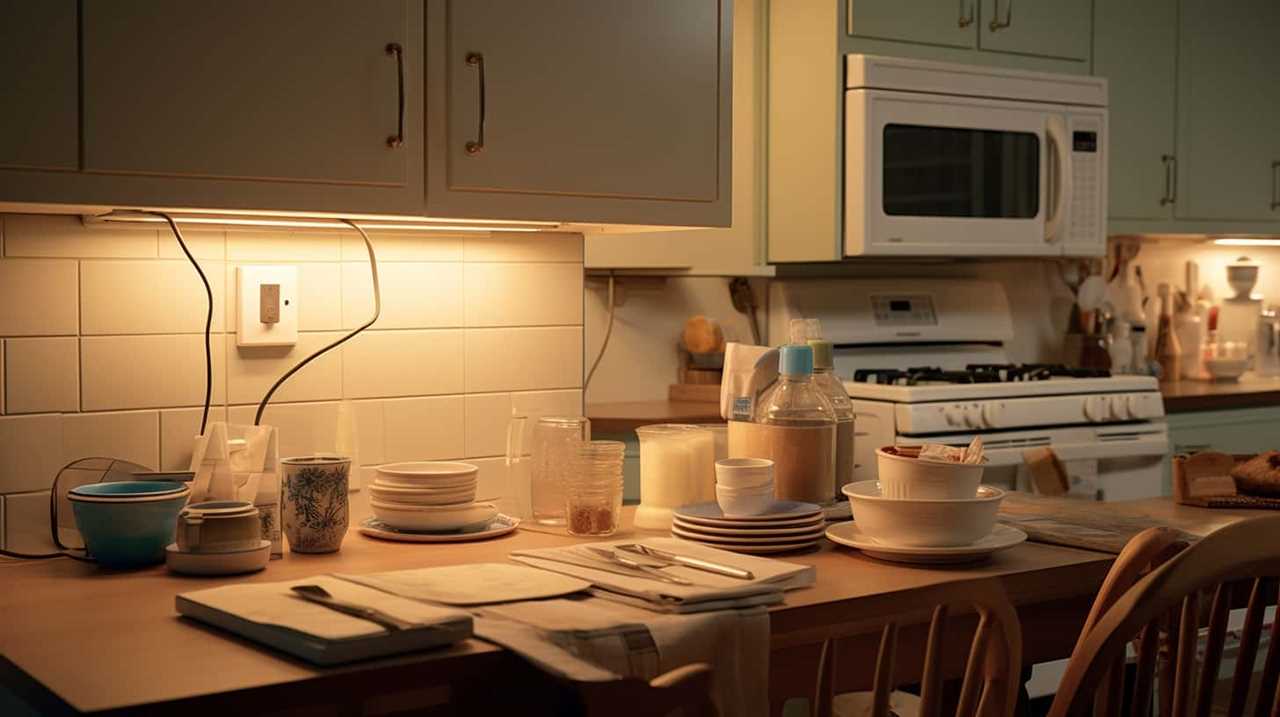
Ultimately, this knowledge empowers us to make informed decisions and take control of our appliance energy usage.
Key Takeaways
- Standby power, also known as vampire power, refers to the electric power consumed by appliances that are plugged in but not actively in use.
- Unplugging appliances when not in use can save a significant amount of energy and contribute to a more sustainable lifestyle.
- Many appliances continue to consume power even when they are in standby mode, such as televisions, game consoles, and chargers.
- Unplugging appliances not only reduces phantom energy consumption but also minimizes the risk of electrical fires and extends the lifespan of the appliances.
Standby Power: What Is It
Standby power refers to the electric power consumed by appliances that are plugged in but not actively in use. It is also commonly known as ‘vampire power’ due to its stealthy energy consumption. Vampire power awareness has become increasingly important as people seek to understand and reduce their energy consumption and environmental impact.
By understanding standby power, individuals can take proactive steps to minimize their energy usage and save money on their utility bills. Various standby power reduction techniques have been developed to address this issue. These techniques include using power strips with built-in timers or switches to completely cut off power to appliances when not in use, unplugging devices that are not frequently used, and investing in energy-efficient appliances that consume less power when in standby mode.
Understanding vampire power and implementing standby power reduction techniques can help individuals and households reduce their overall energy consumption and contribute to a more sustainable future.

Understanding Vampire Power
Understanding vampire power is crucial in the quest to conserve energy and reduce electricity bills.
Also known as phantom energy consumption, vampire power refers to the electricity that appliances continue to draw even when they are turned off or in standby mode.
Unplugging these devices when not in use can potentially save a significant amount of energy and contribute to a more sustainable lifestyle.
Phantom Energy Consumption
Phantom energy consumption, also known as vampire power, is the phenomenon of appliances using electricity even when they are not in use. This can be a significant source of energy waste and a drain on your electricity bill. Understanding how phantom energy consumption works is crucial for implementing effective energy-saving strategies, especially in the age of smart home technology.

Here are four key points to consider:
- Standby mode: Many appliances, such as televisions and game consoles, continue to consume power even when they are in standby mode.
- Chargers: Leaving chargers plugged in when not actively charging a device still draws power.
- Sleep mode: Computers and laptops in sleep mode still consume energy to stay connected to the network and receive updates.
- Power strips: Using power strips with an on/off switch allows you to easily cut off power to multiple devices at once.
Understanding phantom energy consumption and implementing energy-saving strategies can help reduce your electricity usage and save money. However, is simply unplugging appliances the most effective way to achieve this? Let’s explore in the next section.
Unplugging to Save?
While it may seem counterintuitive, unplugging appliances can be an effective way to save electricity and reduce phantom energy consumption. Many appliances continue to draw power even when they are turned off or in standby mode, a phenomenon known as vampire power. By unplugging these appliances when they are not in use, you can prevent them from consuming unnecessary energy.
This simple act can result in significant energy savings over time and lower your electricity bills. Unplugging benefits extend beyond just reducing phantom energy consumption; it also helps to minimize the risk of electrical fires and extends the lifespan of your appliances. Incorporating unplugging into your energy saving strategies can make a noticeable difference in your overall energy consumption.

Now, let’s explore the truth about appliance energy consumption and how it impacts your electricity usage.
The Truth About Appliance Energy Consumption
When it comes to appliance energy consumption, there are a few key points to consider.
First, standby power wastage is a significant contributor to energy usage, as appliances continue to draw power even when not in use. This phenomenon, often referred to as vampire energy consumption, can account for a substantial portion of a household’s electricity bill.
One effective way to combat this is by unplugging appliances when they are not in use, ensuring that they are not consuming unnecessary energy.

Standby Power Wastage
Standby power wastage is a prominent issue in appliance energy consumption. When appliances are plugged in but not in use, they still consume energy, known as standby power. Minimizing standby power can significantly reduce energy waste and save money.
Here are four energy-saving tips to minimize standby power wastage:
- Unplug unused appliances: Simply unplugging appliances when not in use can eliminate standby power consumption altogether.
- Use power strips: Plugging appliances into power strips allows you to easily turn off multiple devices at once, cutting off their standby power.
- Choose energy-efficient appliances: Look for appliances with energy-saving features and low standby power consumption.
- Enable power-saving modes: Many appliances have power-saving modes that reduce standby power usage when the device is not actively being used.
Vampire Energy Consumption
Vampire energy consumption, a hidden aspect of appliance energy usage, poses a significant challenge to energy efficiency efforts. Also known as standby power or phantom load, vampire energy refers to the electricity consumed by appliances even when they are turned off or in standby mode.
This hidden energy usage may account for a considerable portion of a household’s energy bill. Common culprits include televisions, computers, game consoles, and chargers.
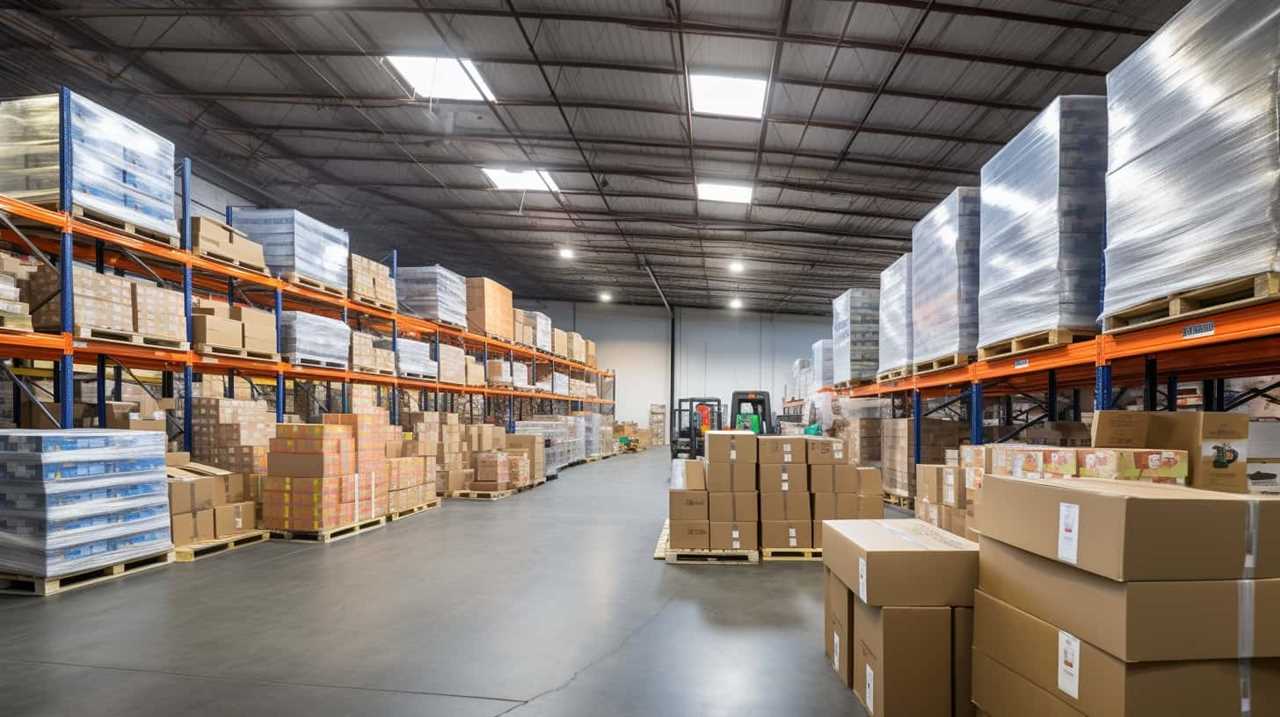
To minimize vampire energy and reduce energy waste, it is essential to unplug appliances when they are not in use or utilize power strips with switches. Energy-saving features, such as automatic power-down modes and smart power strips, can also help in combating this hidden energy usage.
By being aware of vampire energy consumption and taking proactive steps, individuals can make significant strides in saving energy and reducing their carbon footprint.
Transitioning to the next section, let’s explore the benefits of unplugging appliances to save energy.
Unplugging to Save Energy
To effectively save energy, it is crucial to regularly disconnect appliances from power sources. Unplugging appliances when they are not in use is one of the most effective energy-saving techniques. Here are four benefits of unplugging:
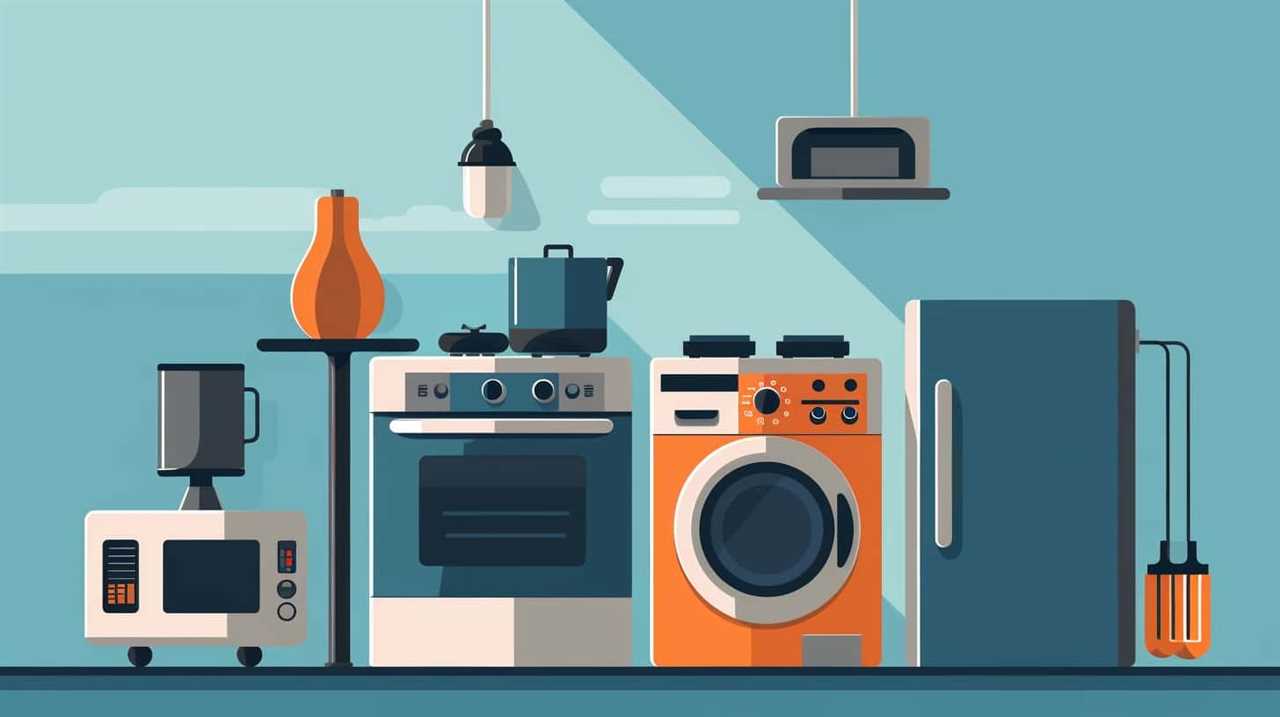
- Eliminates standby power consumption: Many appliances continue to draw power even when they are turned off. By unplugging them, you completely eliminate this ‘vampire’ energy consumption.
- Reduces electricity bills: Unplugging appliances can lead to significant savings on your electricity bills. Even when appliances are not actively being used, they can still consume a considerable amount of energy if left plugged in.
- Extends appliance lifespan: Constantly being connected to a power source can contribute to wear and tear on appliances. By unplugging them, you reduce the strain on their components and extend their lifespan.
- Minimizes the risk of electrical hazards: Unplugging appliances when not in use reduces the risk of electrical fires and other accidents, ensuring a safer environment for you and your family.
Factors That Contribute to Electricity Usage
Various factors contribute to the overall electricity usage of appliances when they are plugged in. Understanding these factors can help individuals make informed decisions about their energy consumption and find ways to reduce electricity usage.
One of the main factors affecting energy consumption is the type and size of the appliance. Larger appliances generally require more energy to operate compared to smaller ones. Additionally, the age and efficiency of the appliance play a significant role. Older appliances tend to be less energy-efficient compared to newer models that are designed to meet stricter energy standards.
Another factor to consider is how the appliance is used. For example, running a dishwasher or washing machine with a full load can be more energy-efficient than running several smaller loads. Similarly, adjusting the thermostat of air conditioning units or heating systems can help reduce energy consumption.
By understanding these factors and implementing energy-saving practices, individuals can reduce their electricity usage and contribute to a more sustainable environment.

| Factors Affecting Energy Consumption | Ways to Reduce Electricity Usage |
|---|---|
| Type and size of the appliance | Choose energy-efficient models |
| Age and efficiency of the appliance | Proper maintenance and repairs |
| How the appliance is used | Run appliances with full loads |
| Adjusting thermostat settings | Unplug unused appliances |
Common Household Appliances That Use Electricity When Plugged in
Many common household appliances continue to consume electricity even when they are not actively in use. This is known as always-on power consumption.
Additionally, appliances that have a standby mode also use electricity to maintain their functionality.
Lastly, there is phantom power usage, which refers to the small amounts of electricity that appliances consume when they are plugged in but turned off.
Understanding these points can help individuals make informed decisions about their energy usage and potentially reduce their electricity bills.

Always-On Power Consumption
Household appliances’ always-on power consumption can contribute significantly to overall electricity usage. While many people are aware of the energy consumption when appliances are actively in use, they often overlook the hidden electricity consumption when the appliances are plugged in but not in use.
Here are four common household appliances that continue to use electricity even when they are not actively being used:
- Televisions: Even when turned off, televisions still consume energy to power features like standby mode and remote control functionality.
- Computers: Computers in sleep mode or on standby still draw power to maintain network connectivity and be ready for quick startup.
- Chargers: Chargers for devices like phones and laptops continue to consume energy when plugged in, even if the device is not connected.
- Gaming consoles: Gaming consoles, such as Xbox or PlayStation, often remain on standby mode, consuming electricity for system updates and downloads.
Being aware of these always-on energy usages can help households reduce their overall electricity consumption and save on energy bills.
Standby Mode Consumption
Standby mode consumption is a significant contributor to overall electricity usage. Certain household appliances continue to draw power even when they are not actively being used. This standby power management feature, while convenient, can lead to unnecessary energy consumption and higher electricity bills.

Common household appliances that use electricity when plugged in include televisions, computers, gaming consoles, printers, and even phone chargers. To measure standby consumption accurately, specialized equipment is needed, such as a power meter or a watt meter. These devices allow homeowners to identify which appliances are consuming the most electricity in standby mode.
Understanding and managing standby mode consumption is essential for reducing energy waste and promoting energy efficiency.
Now, let’s delve into another aspect of energy consumption in households, known as phantom power usage.
Phantom Power Usage
Various household appliances continue to consume electricity even when they are not in use, contributing to what is known as phantom power usage. This hidden energy consumption can account for a significant portion of a household’s electricity bill.

To reduce phantom power and save energy, it is important to be aware of common household appliances that contribute to this phenomenon. Here are four examples:
- Chargers: Even when not charging a device, chargers draw power from the socket.
- Televisions: TVs in standby mode still consume electricity to power features like remote control sensors and instant-on capabilities.
- Computers: Desktops and laptops in sleep mode or hibernation still use power to maintain network connectivity and wake-on-LAN functionality.
- Kitchen appliances: Devices like coffee makers, toasters, and microwave ovens often have digital clocks or standby modes that consume power when not in use.
Being mindful of these appliances and unplugging them when not in use can help reduce phantom power and lower energy bills.
How Much Electricity Do Appliances Use in Standby Mode
Appliances in standby mode consume a significant amount of electricity. Even when not in use, these devices continue to draw power, contributing to what is known as standby power or phantom power usage. To give you an idea of the energy consumption in standby mode, let’s take a look at the following table:
| Appliance | Standby Power Consumption (Watts) |
|---|---|
| Television | 3-10 |
| Computer | 1-5 |
| Game Console | 1-15 |
As you can see, these numbers may seem small, but they can quickly add up over time. To combat this, manufacturers have implemented standby power reduction techniques and energy-saving features in appliances. These include features like automatic power-off functions, energy-efficient standby modes, and power management systems. However, it’s important to note that even with these advancements, standby power still has an impact on your energy bill. In the next section, we will explore how standby power consumption can affect your overall energy usage and costs.

The Impact of Standby Power on Your Energy Bill
The presence of standby power has a significant influence on your energy bill. Here are four key points to understand the impact of standby power on your energy bill:
- Standby power consumption: Appliances on standby mode can still consume a substantial amount of electricity, even when not actively in use. This constant power draw can contribute to your overall energy consumption.
- Energy efficient appliances: Investing in energy efficient appliances can help reduce standby power consumption. These appliances are designed to minimize the amount of power they use in standby mode, resulting in potential savings on your energy bill.
- Standby power savings: By unplugging appliances or using power strips with built-in switches, you can eliminate standby power consumption completely. This simple step can lead to significant savings on your monthly energy bill.
- Changing habits: Being mindful of unplugging appliances when not in use can help reduce standby power consumption and ultimately lower your energy bill. Developing energy-saving habits can make a noticeable difference in your overall energy usage.
Tips to Reduce Standby Power Consumption
To effectively reduce standby power consumption, it is important to implement practical strategies. By adopting energy-saving habits and implementing effective strategies, you can significantly reduce the amount of standby power consumed by your appliances.
One strategy is to use power strips or smart plugs to easily turn off multiple devices at once. Another effective strategy is to unplug devices that are not in use, such as phone chargers and small appliances.
Additionally, choosing energy-efficient appliances and using power-saving settings can further reduce standby power consumption. It is also beneficial to educate yourself and your family members about the importance of reducing standby power and to make it a priority in your household.

Smart Power Strips: a Solution to Minimize Energy Waste
One solution to minimize energy waste and reduce standby power consumption is to utilize smart power strips. These power strips are designed to provide energy-saving solutions by cutting off power to devices that are not in use.
Here are four benefits of using smart power strips:
- Reduced standby power consumption: Smart power strips detect when devices are in standby mode and automatically cut off power, preventing them from consuming unnecessary electricity.
- Convenience and ease of use: Smart power strips often come with features like timers, motion sensors, and remote controls, making it easy to manage and control power usage.
- Protection against power surges: Most smart power strips are equipped with surge protectors, safeguarding your devices from voltage spikes and potential damage.
- Monitoring and energy tracking: Some smart power strips provide real-time energy monitoring and tracking, allowing you to identify energy-hogging devices and make informed decisions to optimize energy consumption.
Unplugging Vs. Using a Power Strip: Which Is Better
When considering energy conservation, it is important to compare the benefits of unplugging appliances individually versus using a power strip. Both methods have their advantages and it ultimately depends on personal preference and convenience.
Unplugging appliances individually ensures that they are completely disconnected from the power source, eliminating any standby power consumption. This is especially important as standby power, also known as vampire power, can contribute to a significant amount of energy waste over time.

On the other hand, using a power strip allows for the convenience of easily turning off multiple appliances with just one switch. This can be particularly useful in situations where appliances are grouped together, such as in an entertainment center or office space.
The Role of Energy-Efficient Appliances in Reducing Electricity Usage
Energy-efficient appliances play a crucial role in reducing electricity usage. By using less energy to perform the same tasks, these appliances help to lower overall electricity consumption.
This not only reduces the environmental impact but also leads to significant cost savings for households and businesses.
Importance of Energy-Efficiency
The role of energy-efficient appliances in minimizing electricity usage is crucial for achieving sustainable energy consumption. To understand the importance of energy efficiency, consider the following:
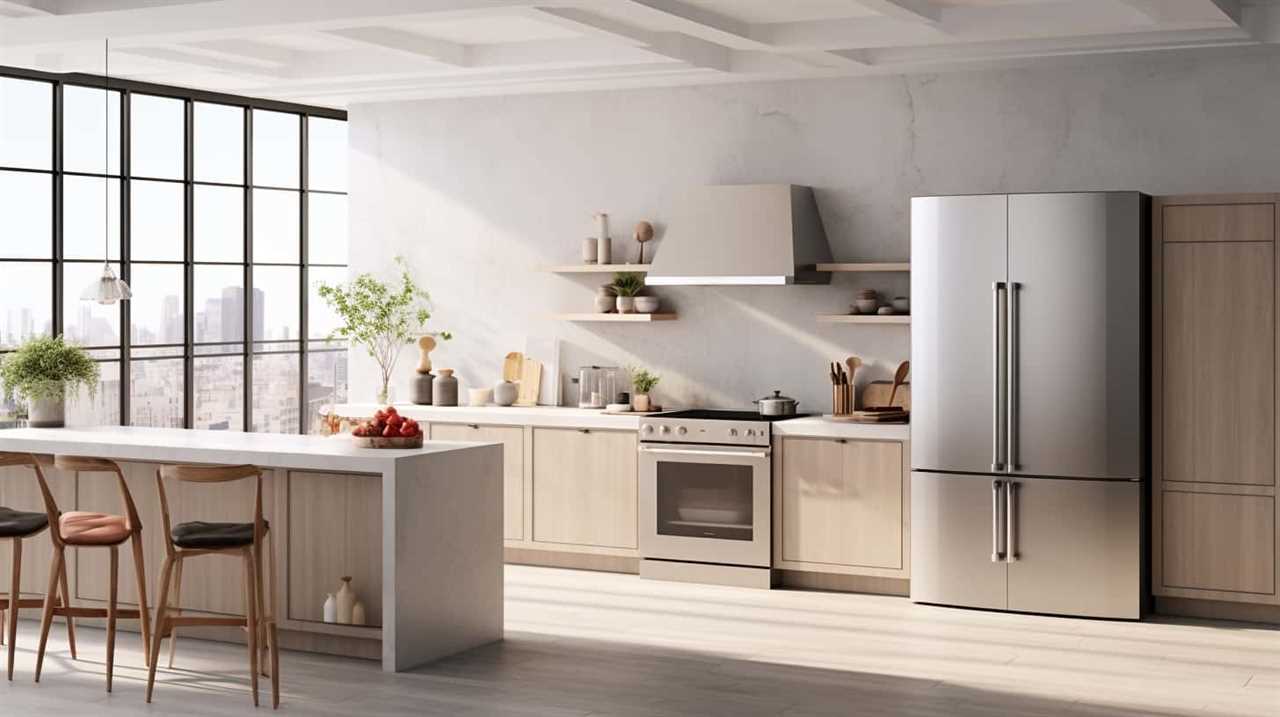
- Lower energy consumption: Energy-efficient appliances are designed to use less electricity while still providing the same level of performance. This not only reduces your energy bills but also decreases the demand for power generation, contributing to a more sustainable energy grid.
- Reduced environmental impact: By using energy-efficient appliances, you can significantly reduce your carbon footprint. These appliances consume less energy, resulting in lower greenhouse gas emissions and less strain on natural resources.
- Long-term cost savings: Although energy-efficient appliances may have a higher upfront cost, they can save you money in the long run through reduced energy consumption. Over time, the energy savings can offset the initial investment, making it a financially wise choice.
- Increased comfort and convenience: Energy-efficient appliances often come with advanced features that enhance user experience. From programmable thermostats to smart home technology, these appliances offer greater control and convenience, allowing you to optimize energy usage according to your needs.
Impact on Electricity Consumption
Considering the importance of energy efficiency discussed earlier, it is evident that energy-efficient appliances play a significant role in reducing electricity usage and its impact.
One of the key ways in which energy-efficient appliances contribute to this reduction is by reducing standby power consumption. Standby power refers to the electricity consumed by appliances when they are plugged in but not in use. Energy-efficient appliances are designed to minimize standby power by using advanced power management systems and technologies.
Additionally, these appliances are engineered to use less electricity overall, thereby further reducing energy consumption. To maximize the benefits of energy-efficient appliances, it is important for users to adopt energy-saving strategies such as turning off appliances when not in use, utilizing power-saving modes, and regularly maintaining and servicing the appliances.
How to Identify Appliances With Low Standby Power Consumption
One effective method to identify appliances with low standby power consumption is by examining their power usage in standby mode. Here are four strategies to help you identify energy efficient appliances and reduce standby power consumption:

- Look for appliances with ENERGY STAR certification. These appliances have been tested and verified to meet strict energy efficiency standards.
- Check the product label or user manual for information on standby power consumption. Look for appliances that have a low standby power rating, typically expressed in watts or milliwatts.
- Use a power meter or energy monitor to measure the standby power consumption of your appliances. This will give you a clear understanding of how much power they are using when not in use.
- Consider purchasing smart power strips or timers that can automatically turn off power to appliances when they are not needed. These devices can help reduce standby power consumption and save energy.
By implementing these strategies, you can identify appliances with low standby power consumption and actively reduce your energy consumption.
Now, let’s delve into the myth of ‘off’ mode and debunk some misconceptions.
The Myth of "Off" Mode: Debunking Misconceptions
To further debunk misconceptions surrounding the myth of ‘off’ mode, it is crucial to analyze the actual power consumption of appliances when they are supposedly turned off.
Many people believe that when an appliance is switched off, it consumes no electricity. However, this is far from the truth. Appliances in ‘off’ mode still draw a small amount of power, known as standby power or vampire power. This power is used to keep certain functions of the appliance active, such as remote control sensors or clock displays.

Even though the power consumed in ‘off’ mode may be minimal, it can add up over time and contribute to energy wastage. To combat this, energy-saving strategies such as using power strips or unplugging appliances when not in use can be employed.
Conclusion: Taking Control of Your Appliance Energy Usage
By understanding the impact of standby power and implementing energy-saving practices, individuals can effectively take control of their appliance energy usage. Here are four energy-saving strategies to help you take charge of your appliances’ energy consumption:
- Unplug unused appliances: Many appliances continue to draw power even when not in use. By unplugging them when not needed, you can eliminate this standby power consumption.
- Use power strips: Plug multiple appliances into a power strip and turn it off when not in use. This prevents them from drawing standby power individually and makes it easier to control their energy usage.
- Opt for energy-efficient appliances: When purchasing new appliances, look for those with the Energy Star label. These appliances are designed to use less energy without compromising performance.
- Adjust settings and usage habits: Take advantage of energy-saving features on your appliances, such as timers and power-saving modes. Additionally, adopt energy-conscious habits like washing clothes in cold water and defrosting refrigerators regularly.
Frequently Asked Questions
Can Appliances Still Use Electricity When They Are Turned Off?
Appliances can consume electricity even when switched off due to standby power consumption. This occurs when appliances remain plugged in, using small amounts of energy to power features such as clocks or remote controls. Standby power consumption can contribute to higher energy bills.
How Can I Identify Which Appliances Have Low Standby Power Consumption?
Energy efficient appliances can help reduce standby power consumption. To identify appliances with low standby power consumption, consider checking for ENERGY STAR certification or using a watt meter to measure their power usage in standby mode.

What Are Some Tips to Reduce Standby Power Consumption?
To reduce standby power consumption, consider adjusting energy-saving settings on appliances and utilizing smart plugs. These tips can help minimize unnecessary electricity usage and promote energy efficiency, leading to potential cost savings and environmental benefits.
Are Smart Power Strips an Effective Solution to Minimize Energy Waste?
Smart power strips are an effective solution to minimize energy waste. They offer energy saving features such as automatically cutting off power to idle appliances and monitoring energy usage, providing valuable data for optimizing energy consumption.
Is It Better to Unplug Appliances or Use a Power Strip to Reduce Standby Power Consumption?
The debate between unplugging appliances and using power strips to reduce standby power consumption is centered around the impact on energy bills. Understanding the effects of standby power is crucial for making an informed decision.
Conclusion
To truly take control of your appliance energy usage, it is crucial to understand the concept of standby power and vampire power.

Many common household appliances continue to consume electricity even when they are plugged in but not in use.
By identifying energy-efficient appliances and debunking misconceptions about ‘off’ mode, you can reduce your electricity usage and contribute to a more sustainable future.
Take the reins of your energy consumption and let your appliances rest in a power-saving slumber.




